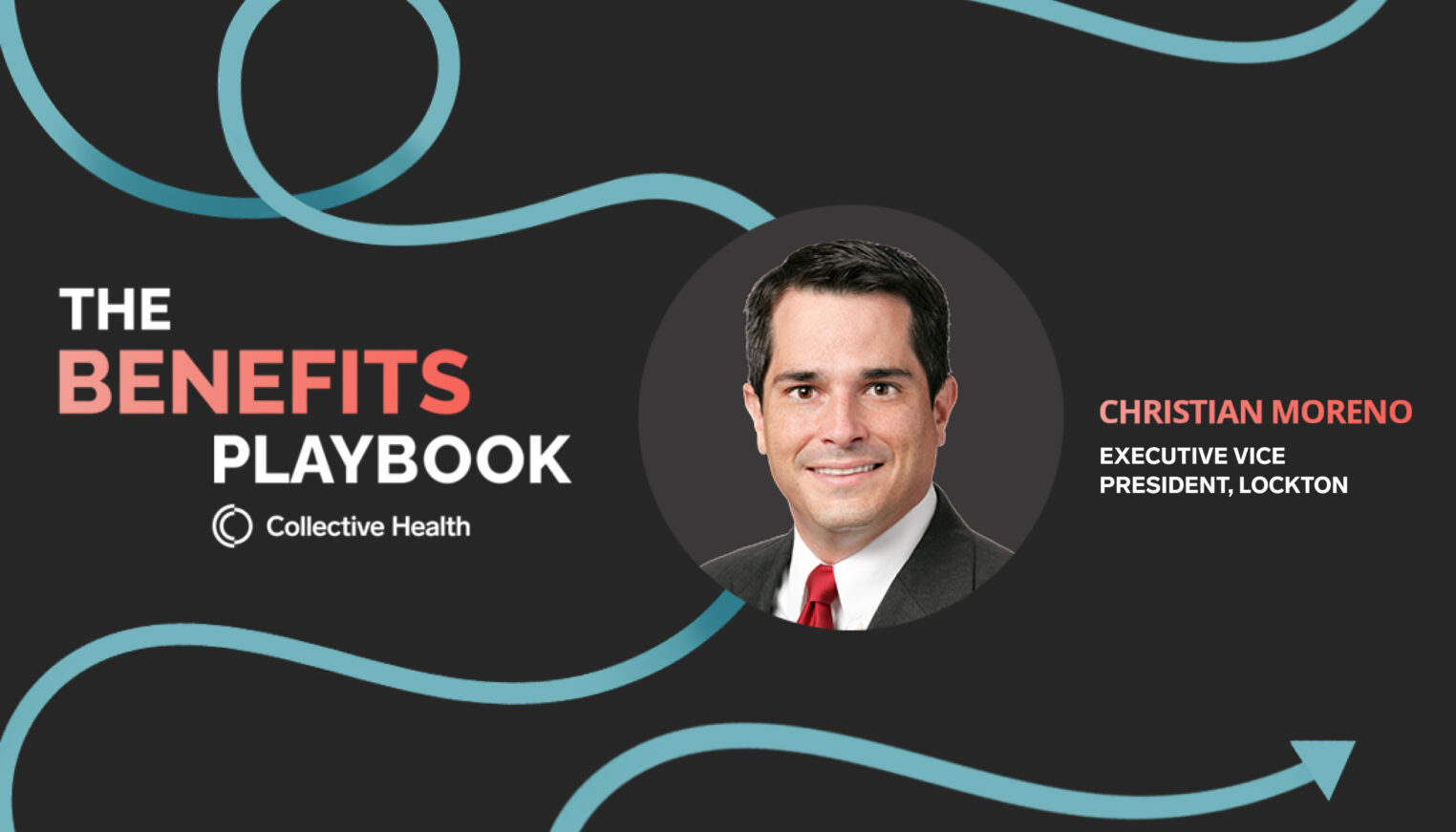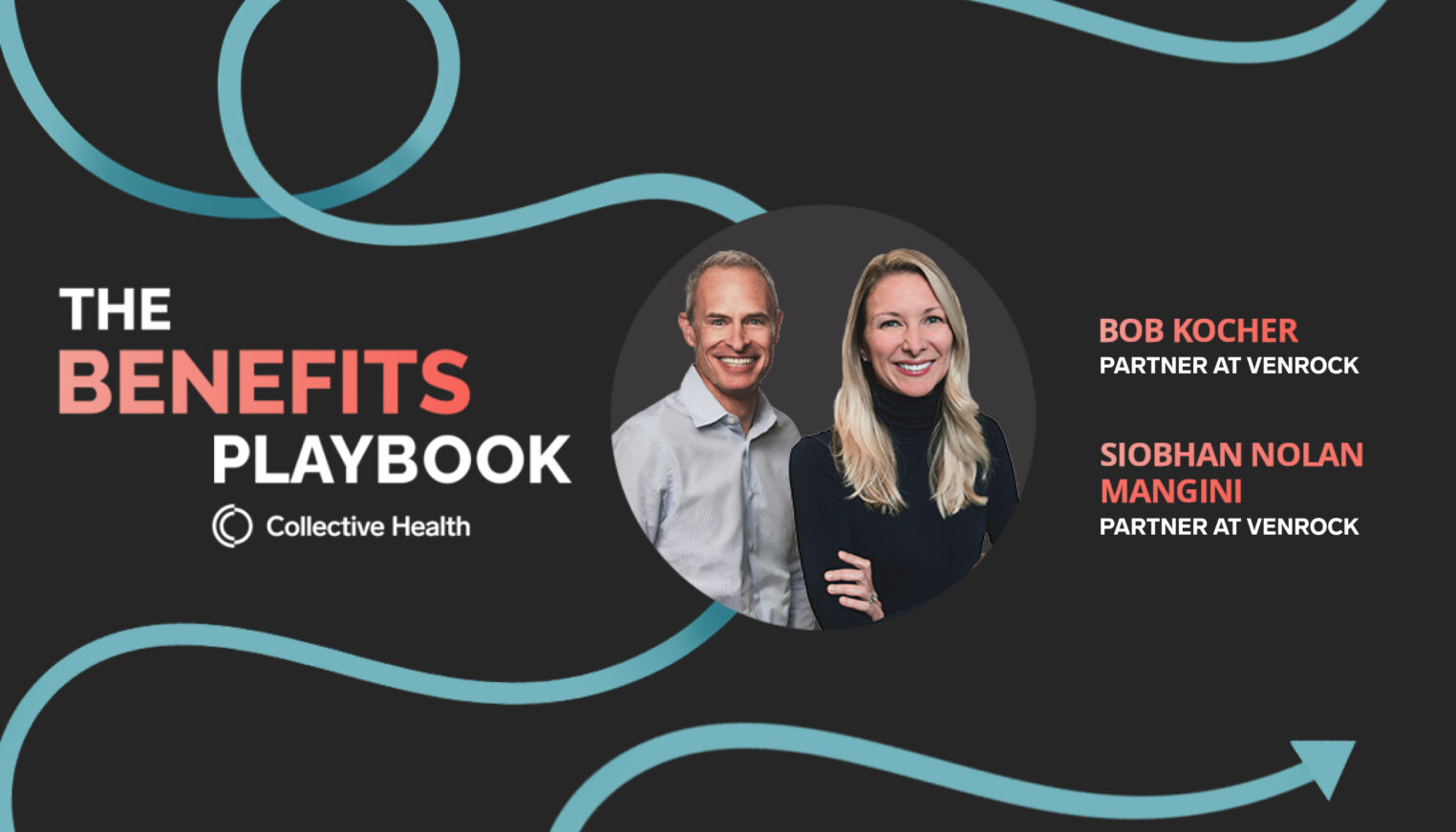By Alison Worthingon, Chief Marketing Officer
Let’s face it, 2021 did not quite live up to our expectations. The only certainty was uncertainty as the pandemic endured, the Great Resignation accelerated, and the return to office dates experienced a series of u-turns. In spite of it all, a number of positive trends emerged that will shape the future of healthcare. Here are some insights in health benefits to consider as you navigate the new normal in 2022.
So much of what drew me to Collective Health was its incredible mission to empower people toward a better health journey. In my first year here, our work proved to be especially critical, as our community of clients and members faced unprecedented challenges, from The Great Resignation to more stress and burnout, a growing mental health crisis, and a rapidly evolving regulatory environment.
“To say that 2021 was challenging would be an understatement.”
The Great Resignation blindsided the corporate world, with record numbers of people quitting their jobs or, in some cases, even leaving the workforce for good. With remote work environments came longer work weeks, and even higher rates of employee burnout, which disproportionately impacted women— 42% of women compared with 35% of men.
As a working single parent of two girls, that 1 in 3 women considered changing or leaving their jobs in the past year, really hit home. Working remotely while raising children is hard to juggle in the best of circumstances. Once you add a pandemic, its heightened fears and anxieties, and limited access to childcare, so many women were put in impossible working conditions.
Acknowledging my own privilege of working for a company with excellent health care and the ability to Zoom from my dining room as others took on risk as frontline workers, I found the uncertainty and balancing act of remote work especially challenging. And, I am proud to work for Collective Health, which recognizes diversity as a strength and emphasizes inclusive culture. These goals shaped our recruitment goals in 2021, during which we hired over 400 people and achieved a c-suite that is over 40% female (compared to approx. 25% on average in American firms).
As the year progressed, I’ve embraced the benefits of hybrid work as we’ve led conversations with innovative customers to change tactics in order to alleviate burnout and remain competitive in the so-called “talent wars”. While searching for offerings to better support their people and improve the “employee experience”, employers grappled with decision fatigue in a growing, and overwhelming ecosystem of digital health solutions.
As a result, many organizations turned to those leading their benefits strategies—like Collective Health—to guide them. Among their top priorities, HR leaders expressed the desire for more intuitive programs that better addressed mental health and supported Diversity, Equity, and Inclusion (DE&I) initiatives.
With my new, front-row seat to the health benefits field, I witnessed a marked shift in the needs and demands of our customers and their people. Despite the challenges, I believe that 2022 will be a game-changer for our industry and Collective Health to create change for the better, particularly in the following areas.
1. Addressing social determinants of health is critical to improving health
For many thought leaders in our space, the pandemic shed light on the severe disparities in America’s healthcare system. COVID-19 disproportionately affected minority groups with age-standardized data showing Black, Hispanic, and American Indian and Alaska Native (AIAN) people are at least twice as likely to die from COVID-19 as their White counterparts.
Researchers attribute this to both biomedical factors and social determinants of health (SDOH)–the economic and social conditions that influence both individual and group differences in health status. According to the World Health Organization(WHO), numerous studies show that SDOH account for 30-55% of health outcomes.
As a company focused on empowering people in their health, Collective Health is well positioned to help improve health outcomes. In fact, a core reason I was drawn to Collective Health was the unique approach to Care Navigation, which directly addresses social determinants of health by providing personalized support to our members.
Our team of nurses, dietitians, social workers, and pharmacists, can help identify the social and environmental factors impacting member health, and then coordinate referrals to community-based service providers who can assist them.
2. Humanizing your health plan drives more value for your people
COVID-19 helped to highlight just how confusing health benefits were (and still are) for many Americans. A 2020 Policygenius survey on health insurance literacy taken during the pandemic found that around one in four Americans avoided care because they didn’t know what their health plan covered. Another 8% of respondents said they avoided COVID-19 testing, treatment, and care because they were unsure whether or not it was covered.
1 in 4 Americans avoided care because they didn’t understand their plan.
To address these challenges, we need to make healthcare more human and less costly, and one way to do that is through improved health plan design. Some of the most common elements of plan design, like high deductibles, have been linked to health disparities.
Fortunately, there are potential ways to enhance benefits plans to increase the value they provide to members, improve understanding of health benefits, and also minimize out-of-pocket costs!
For example, at Collective Health, we offer Guide PPO, a comprehensive medical plan option that is rooted in clinical evidence and aims to incentivize people to make more informed decisions about their healthcare. Earlier this year, we piloted a version of our Guide PPO that we combined with our hands-on, holistic member support, achieving greater overall awareness around cost, and higher preventative care utilization.
3. Integrating digital health solutions as a pivotal part of the care journey
Digital health solutions, previously seen as disruptive, are now going mainstream as consumers are increasingly driving the agenda in healthcare. This poses unique challenges to health benefits leaders seeking to introduce cutting-edge solutions into a very traditional industry.
I must say that one of the most interesting and rewarding parts of my work this last year has been collaborating with our incredible partners in the digital health space, who help our members with everything from mental health support and family building, to targeted oncology, and musculoskeletal health.
Feedback across the market reflects difficulties (also echoed by clinical experts) that the proliferation of digital health solutions has made the process of selecting, implementing, and evaluating them overwhelming and time-consuming.
Our Director of Partnerships, Lance Larsen, and his team, saw the need for more ease and clarity on behalf of employers, and curated the first-of-its kind, Premier Partner Program™ with 10 leading digital health solutions. Available for benefits plans this year, this program helps our clients more easily realize the value and impact of their point solutions.
4. Building better health benefits to support your talent strategy
Over the course of my career, I’ve seen how attracting and retaining talent goes hand-in-hand with a strong benefits program. 71% of employers agreed in a recent survey, describing medical and pharmacy benefits as a key asset to combatting the current talent crisis.
THE GREAT RESIGNATION AND HEALTH BENEFITS:
DOWNLOAD OUR WHITE PAPER HERE
A “better” benefits strategy is one that entails a more seamless, connected experience for members. Just ask our customer Zoom, which reported the biggest advantage to working with Collective Health was having one spot for members to go with all of their questions across medical, dental, and vision, rather than tracking down a bunch of individual vendors.
A competitive benefits strategy is one that incorporates culturally competent care, or care that more readily meets the evolving social and cultural needs of your people. It’s not just a tenet of Collective Health’s mission, there are proven benefits, such as:
- improved health outcomes
- potentially lower costs
- fewer care disparities
At Collective Health, our Product and Customer Experience teams constantly work to offer a benefits experience that is as inclusive as possible, meaning not only delivering culturally competent care—like understanding the needs of employee populations like the LBGTQIA+ community—but also making care more accessible through different modalities like telehealth.
Today, we offer our Member Advocates training on Transgender Health, including common terms, best practices, and resources. Plus, we developed a tool that helps members search by specialty, location, name, and language, to connect with a provider that meets their needs.
5. Tackling burnout by prioritizing health and wellness
Now a word firmly in the corporate vocabulary, burnout is a newcomer to the International Classification of Diseases manual, the primary reference for medical billing. Although it’s not a medical diagnosis, the World Health Organization (WHO) has determined it to be an “occupational phenomenon” exclusive to the workplace.
During the pandemic, 76% of all US employees reported experiencing burnout, as frontline workers cared for the sick and kept the outside world ticking, while office staff went remote, and struggled to separate home life from their work obligations.
The topic was so pivotal for our clients that we invited Dr. Jeffrey Pfeffer, author and professor of organizational behavior at Stanford University, to speak on strategies employers can use to combat it at last year’s Collective Health “Together” conference.
“If you’re concerned about turnover, employee engagement, or productivity, you want to keep your people at their physical and mental best,” he said. One of his main conclusions was to make health and wellness a strategic priority, starting at the senior management level. “Unhealthy people are more likely to miss work, more likely to not do their best when they’re at work, and are more likely to turn over.”
Key Takeaways
As we wait (impatiently) for the pandemic to finally wind down, I want to share this message of hope and optimism for a better year in 2022. It is my firm belief that we are finally going to reap the benefits of the incredible advances we have made since COVID-19 entered our lives, especially in health benefits.
- Start by assessing the social determinants of health that affect your teams.
- Push for plans that put the member at the center of the health benefits experience.
- Identify the primary needs of your employees for digital health solutions and find a platform that makes access and impact easy, like Collective Health.
- Stand out from the crowd in the competition for talent with a great health benefits strategy and a clear voice in culturally competent care.
- Prioritize health, wellness, and preventive solutions to tackle professional burnout.



